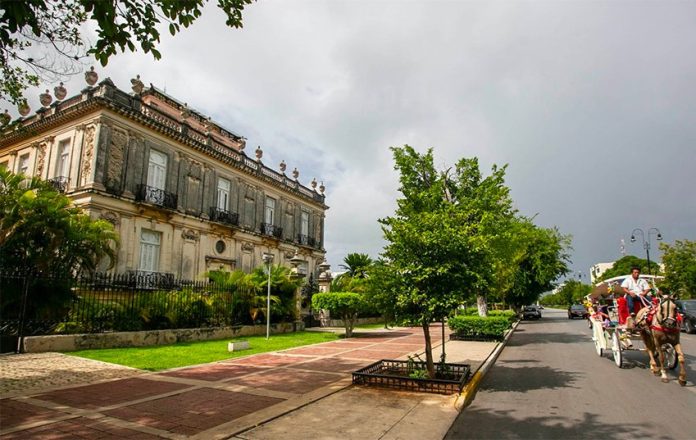Around 5,500 people marched in Mexico City yesterday to protest the decision to cancel the new airport project at Texcoco, México state.
Protesters argued that the public consultation that led to the cancellation decision was unconstitutional and warned that president-elect López Obrador would hold more illegitimate referendums on other issues.
“What’s going to happen is that he’s going to want to have consultations for everything and they will be unconstitutional. That’s why we’re marching, to stop this man who wants to do a lot of damage to Mexico,” said protester Josefina Ruiz.
The demonstrators also contended that cancelling the new airport would cost thousands of jobs and halt Mexico’s economic development.
Late last month, 70% of people who participated in the consultation voted in favor of building two new runways at an air force base in México state and upgrading the existing Mexico City airport and that in Toluca over continuing with the US $14-billion project at Texcoco.
López Obrador has long criticized the project, charging that it is corrupt, too expensive and not needed.
Prominent private sector leaders slammed the decision to cancel the new airport which was announced by the president-elect the day after the consultation ended.
Mexican Employers Federation (Coparmex) president Gustavo de Hoyos said cancelling the project would be “the biggest waste of public resources in the history of the country” and described the public vote as a “Mickey Mouse consultation” and a “flagrant violation of the rule of law.”
Those sentiments were echoed by demonstrators yesterday during the protest, which many social media users dismissed as a marcha fifí, or snob’s march.
Many of the participants appeared to be of a social class that seldom takes to the streets to protest.
Following the march, the president of the influential Business Coordinating Council (CCE) again added his voice to the opposition against the decision, although he conceded that the project was not squeaky clean.
“I don’t deny that there were a lot, a few or some contracts that were awarded directly with elevated prices beyond those of the market [but] . . . it’s not justification to cancel a large-scale airport. What there has to be is transparency and punishment,” Juan Pablo Castañón said.
“All the contracts have to be analyzed and technically studied to see if there were bad decision-making processes or not but that doesn’t mean that [the next government] should cancel an infrastructure project that Mexico needs for the next 40, 50 years,” he charged.
The Federal Auditor’s Office (ASF) said last month that it had detected irregularities of 328 million pesos (US $16.1 million) in airport construction contracts.
Castañón said it doesn’t matter where the new airport is being built, those responsible for the irregularities should be held accountable.
“Shelving [the airport project] and saying, ‘nothing happened here, we’ll give your money back and forget about the money you stole’ is not the Mexico we want.”
López Obrador, who takes office on December 1, met with airport contractors last week and declared that the companies that have been building the project would not take legal action against the incoming government over the cancellation decision.
The contractors would have the opportunity to work on the project to adapt the air force base, upgrade the existing airports and rehabilitate the Texcoco site, he said.
Source: Milenio (sp), El Financiero (sp)









